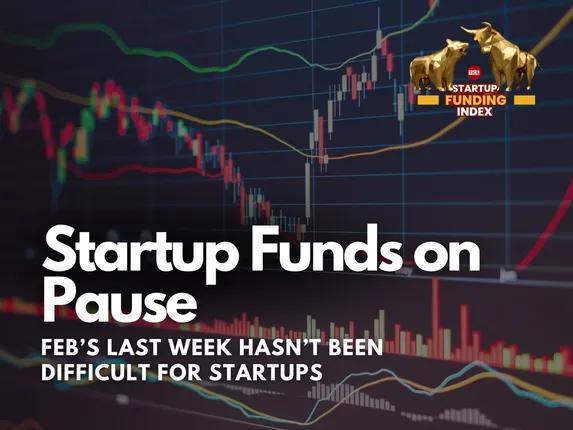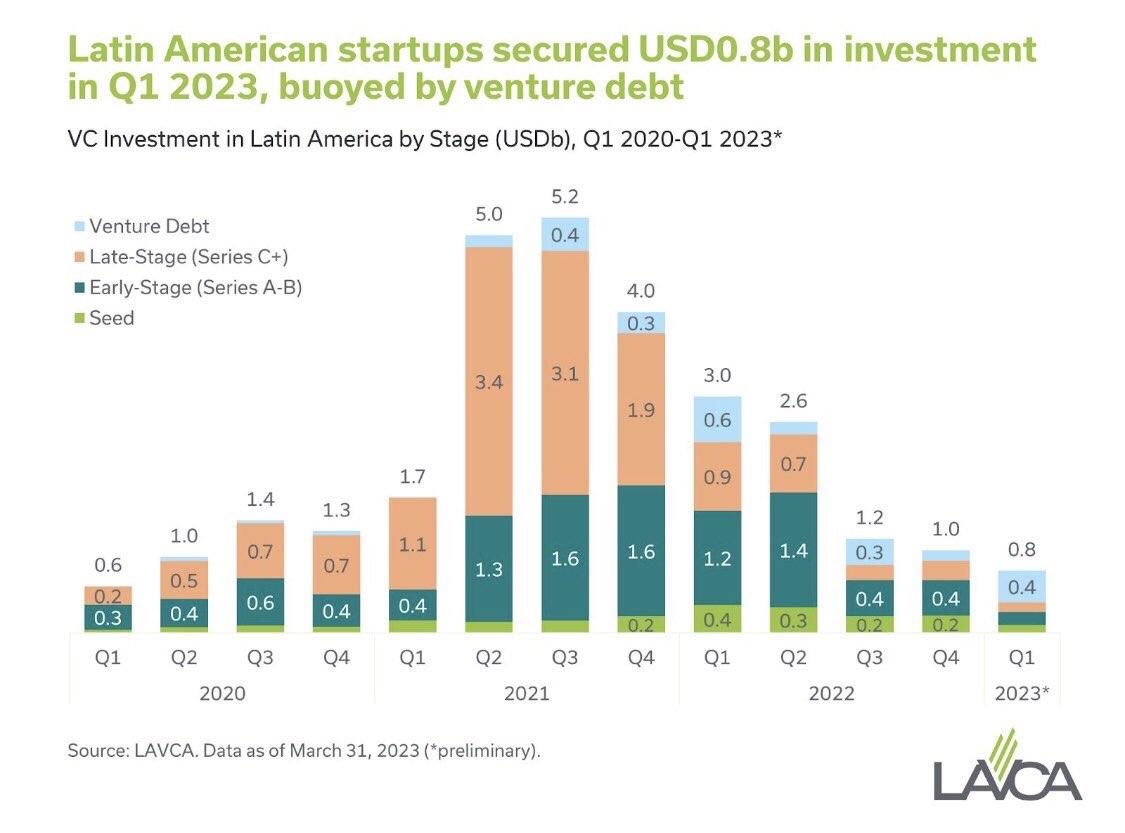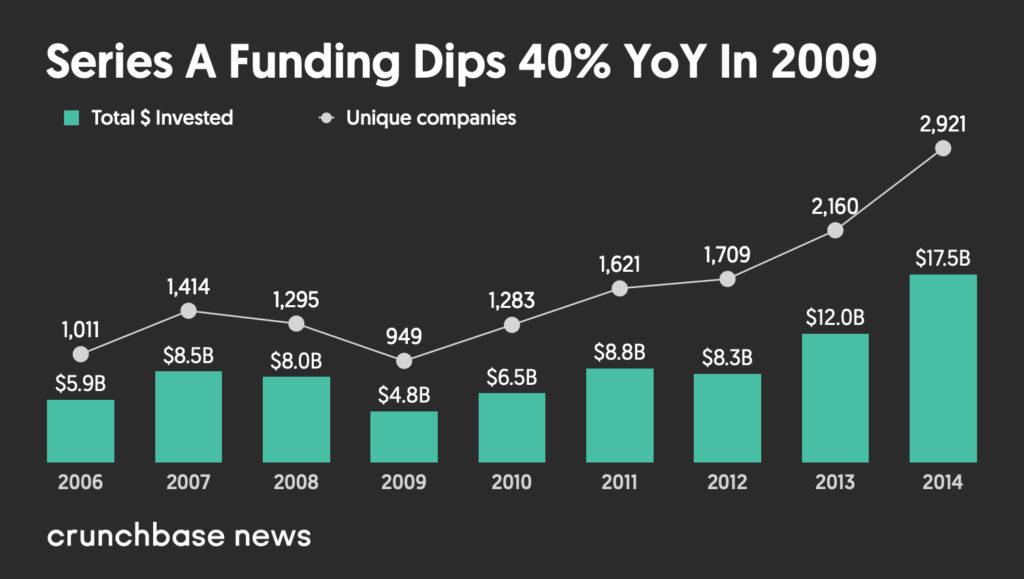As the calendar flips to a new quarter, the startup ecosystem finds itself at a crossroads. After years of relentless growth and record-breaking valuations, Q1 has delivered a sobering reality: a noticeable dip in funding rounds and cautious investor sentiment. This shift has sparked a growing conversation-is the much-feared “tech winter” finally on the horizon? In this article, we delve into the numbers, unpack the underlying causes, and explore what this cooling in startup funding could mean for entrepreneurs, investors, and the broader technology landscape moving forward.
Table of Contents
- Startup Funding Trends Reveal Early Signs of Market Cooling
- Analyzing Sector-Specific Impacts on Emerging Tech Ventures
- Investor Sentiment Shifts and Its Influence on Capital Flow
- Strategic Approaches for Startups Navigating Tightened Funding
- Preparing for the Long Haul: Building Resilience Amid Uncertainty
- Frequently Asked Questions
- Future Outlook
Startup Funding Trends Reveal Early Signs of Market Cooling
As venture capitalists tighten their purse strings, the once-booming startup ecosystem signals a palpable shift. Early-stage deals have notably declined, reflecting a cautious approach among investors who are now prioritizing sustainable growth over rapid expansion. This pivot has left many founders recalibrating their fundraising strategies amid heightened market scrutiny.
Key factors influencing this trend include:
- Rising interest rates leading to increased cost of capital.
- Heightened geopolitical uncertainties causing investor hesitancy.
- Greater emphasis on profitability metrics rather than pure user growth.
Interestingly, sectors such as fintech and biotech are weathering the storm better than others, maintaining relatively stable funding volumes. Meanwhile, consumer apps and lifestyle startups face the brunt of the slowdown, struggling to justify inflated valuations in a more conservative funding climate.
| Sector | Q1 2024 Funding Change | Investor Sentiment |
|---|---|---|
| Fintech | +5% | Optimistic |
| Biotech | +2% | Stable |
| Consumer Apps | -18% | Concerned |
| Lifestyle | -22% | Cautious |
Analyzing Sector-Specific Impacts on Emerging Tech Ventures
Emerging tech ventures are feeling the pressure unevenly across various industries. While sectors like fintech and healthtech continue to attract cautious optimism, others such as consumer IoT and AR/VR startups are facing pronounced slowdowns. This divergence stems from shifting investor priorities, where capital is increasingly funneled into ventures promising immediate, scalable returns or those aligned with regulatory frameworks showing greater stability.
Key sectors showing resilience include:
- Artificial Intelligence: Continued advancements and practical applications keep AI startups in favor despite overall market tightening.
- Cybersecurity: With rising digital threats, this sector remains vital, drawing steady funding flows.
- Healthtech: Pandemic aftermath and aging populations sustain investor interest.
Conversely, areas such as augmented reality and consumer-focused IoT have seen a dip in venture capital interest, largely due to longer development cycles and current economic uncertainties. This split suggests a market prioritizing risk mitigation and near-term viability over speculative innovation.
| Sector | Q1 Funding Change | Investor Sentiment |
|---|---|---|
| Artificial Intelligence | +5% | Optimistic |
| Cybersecurity | +3% | Stable |
| Healthtech | +2% | Cautiously Positive |
| Augmented Reality | -12% | Concerned |
| Consumer IoT | -15% | Bearish |

Investor Sentiment Shifts and Its Influence on Capital Flow
Over the past quarter, there’s been a palpable shift in how investors view the tech startup landscape. What was once a period marked by enthusiastic capital injections has transformed into one of cautious deliberation. This change is largely fueled by rising uncertainties around market valuations, regulatory concerns, and a slew of high-profile tech IPO underperformances.
Investor sentiment is no longer solely driven by potential returns but increasingly influenced by risk management and capital preservation. This cautious stance manifests in several distinct behaviors:
- Reduced seed and early-stage funding rounds as investors prioritize startups with proven traction
- Greater scrutiny on unit economics and path-to-profitability rather than just growth metrics
- Preference for sectors less vulnerable to macroeconomic shocks, like healthcare and enterprise SaaS
- Delayed or downsized follow-on investments despite initial commitments
These trends have a direct impact on capital flow, creating a ripple effect across the entire startup ecosystem. Companies that once sailed smoothly through funding rounds now find themselves navigating a more turbulent sea. Below is a snapshot of capital allocation trends by startup stage during Q1:
| Startup Stage | Q4 Capital Flow (in $M) | Q1 Capital Flow (in $M) | % Change |
|---|---|---|---|
| Seed | 450 | 320 | -29% |
| Series A | 700 | 580 | -17% |
| Series B+ | 1,200 | 1,100 | -8% |
Such contraction in capital flow at all stages signals investors’ heightened preference for startups with resilient business models and clear monetization paths. While some sectors might experience temporary droughts, others stand to benefit as investors reallocate funds to areas with perceived stability and long-term growth potential.

Strategic Approaches for Startups Navigating Tightened Funding
In an environment where venture capital flows have constricted, startups must pivot from aggressive growth to sustainable scaling. Prioritizing capital efficiency becomes paramount-every dollar spent should directly contribute to measurable milestones. This means refining product-market fit and focusing on customer retention rather than broad expansion campaigns.
Another crucial tactic involves diversifying funding sources. Relying solely on traditional VC rounds can be precarious during a market pullback. Consider alternative avenues such as strategic partnerships, government grants, or revenue-based financing. These options may offer more flexibility and less dilution, allowing startups to preserve equity while extending their runway.
Moreover, startups should adopt a rigorous approach to financial forecasting. Transparent and dynamic models enable founders to anticipate cash flow challenges and adjust burn rates accordingly. Here’s a simple framework startups might use to track key financial metrics:
| Metric | Target Range | Frequency |
|---|---|---|
| Burn Rate | Less than 15% monthly revenue | Monthly |
| Runway (months) | Minimum 12 months | Quarterly |
| Customer Acquisition Cost (CAC) | Below $100 | Monthly |
| Lifetime Value (LTV) | 3x CAC or higher | Quarterly |
Lastly, navigating this phase demands an agile mindset. Startups should embed continuous feedback loops from customers and investors, enabling rapid course corrections. By aligning product strategies tightly with market signals and maintaining transparent communication with stakeholders, founders can weather funding slowdowns and emerge stronger.

Preparing for the Long Haul: Building Resilience Amid Uncertainty
When the winds of uncertainty blow through the startup ecosystem, resilience becomes more than just a buzzword-it’s a survival skill. Founders and teams must pivot from short-term optimism to strategic endurance, embracing flexibility without losing sight of their core mission. This means reassessing cash flow, tightening operational expenses, and preparing for extended timelines before profitability or the next funding round.
Key areas to focus on include:
- Financial Discipline: Build detailed budgets that anticipate lean periods and prioritize runway extension.
- Team Morale: Maintain transparent communication and foster a culture of resilience to keep motivation high amid challenges.
- Customer Relationships: Deepen engagement with existing users to ensure steady revenue streams and valuable feedback.
- Product Adaptability: Remain agile in development, ready to pivot or refine offerings based on shifting market needs.
In an environment where funding dips, the ability to endure depends not only on cutting costs but also on strategic investment in growth areas that can weather downturns. This balance often requires a granular understanding of which projects drive real value versus those that are discretionary.
| Action | Impact | Priority |
|---|---|---|
| Extend runway by 6 months | Increased survival odds | High |
| Focus on core product features | Improved customer retention | Medium |
| Reduce discretionary spending | Preserves cash reserves | High |
| Enhance team communication | Boosts morale and alignment | Medium |
Ultimately, weathering a tech winter or any funding slowdown demands a mindset shift-transforming uncertainty from a threat into a catalyst for smarter, more deliberate growth. Those who prepare thoughtfully will not only survive but emerge stronger and more competitive.
Frequently Asked Questions
Q&A: Startup Funding Dips in Q1 – Is a Tech Winter Coming?
Q1: What does the recent dip in startup funding indicate?
A1: The decline in startup funding during Q1 signals a more cautious investment environment. Investors are scrutinizing deals closely, favoring sustainable growth over rapid expansion. This shift could reflect broader economic uncertainties or a market recalibration after several high-growth years.
Q2: How significant is the drop compared to previous quarters?
A2: Funding has decreased notably from the highs of the past few years, with early-stage investments seeing the steepest decline. While not unprecedented, the reduction is significant enough to raise eyebrows among founders and venture capitalists alike.
Q3: Is this decline evidence of an impending tech winter?
A3: The term “tech winter” suggests a prolonged downturn in the technology sector. While the funding dip hints at cooling enthusiasm, it’s too early to declare a full-blown tech winter. Market corrections are common, and innovation cycles often include periods of consolidation before the next surge.
Q4: What factors are contributing to this downturn in funding?
A4: Multiple factors play a role, including rising interest rates, inflation concerns, geopolitical tensions, and a crowded startup landscape. Investors are also prioritizing profitability and clear paths to exit, making it tougher for speculative ventures to secure cash.
Q5: How might startups adapt to the current funding climate?
A5: Startups may need to focus on lean operations, clear value propositions, and sustainable business models. Building strong customer relationships and demonstrating tangible traction can attract more selective investors during this cautious period.
Q6: Could this dip lead to positive long-term effects?
A6: Absolutely. Market slowdowns often weed out weaker business models, enabling stronger startups to thrive. This period might foster more disciplined innovation and healthier ecosystems, setting the stage for future breakthroughs.
Q7: What should investors watch for moving forward?
A7: Investors should monitor macroeconomic indicators, startup performance metrics, and emerging tech trends. Staying agile and identifying resilient companies with adaptable strategies will be key to navigating any prolonged market adjustments.
Q8: In summary, should founders be worried?
A8: Concern is natural, but panic is premature. The funding dip invites a strategic reassessment rather than alarm. Founders who remain focused, adaptable, and transparent with their backers can still find opportunities in this evolving landscape.
Future Outlook
As the dust settles on Q1’s funding figures, the tech world stands at a crossroads. Whether this dip signals the dawn of a prolonged winter or a brief frost before spring remains to be seen. Startups, investors, and industry watchers alike will need to stay agile, reading the subtle shifts in the market’s winds. In the ever-evolving landscape of innovation, resilience and adaptability may prove to be the true currency-no matter the season ahead.

